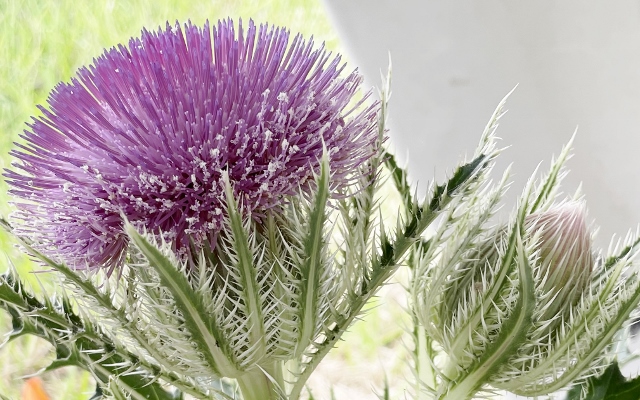
Story and photos by Anita Westervelt, Texas Master Naturalist
Latin botanical names often offer a clue about the nature of a plant. The Latin word horridulum isn’t as bad as it looks, though, for describing prickly bristle thistle, Cirsium horridulum — horridulum merely translates to meaning somewhat rough; unadorned.
About 18 months ago, a rosette began appearing at the base of a Washingtonia palm in my yard. I began photographing it to identify, using the phone app, iNaturalist which gave me choices of thistle species that have been found nearby. The rosette was different than the Texas thistle, Cirsium texanum, with which I am more familiar. The leaves of this new plant were sturdier, more gray than green and certainly more wicked-looking than any thistle I’d ever come across.
The rosette continued to expand but do little else as the months went by, and then one morning, another rosette appeared next to it. Within weeks, a huge bud began pushing up from the center of each rosette and very soon both plants produced a beautiful lavender pom-pom-shaped flower artfully surrounded by green and white long, feathery sepals. The plant was identified as bristle thistle, Cirsium horridulum.
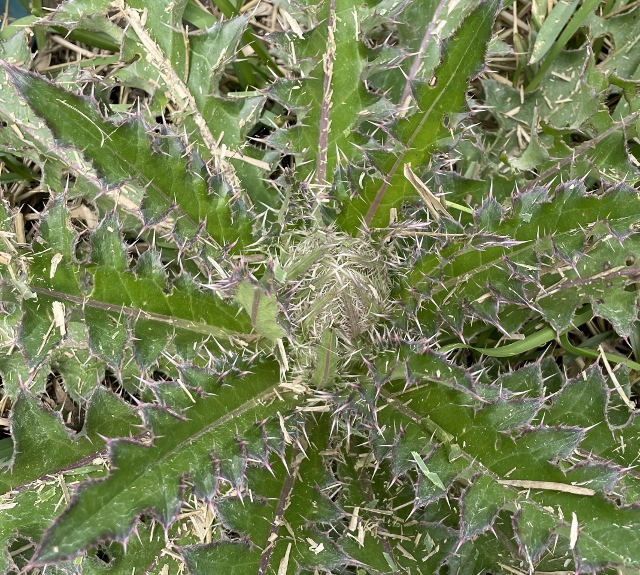
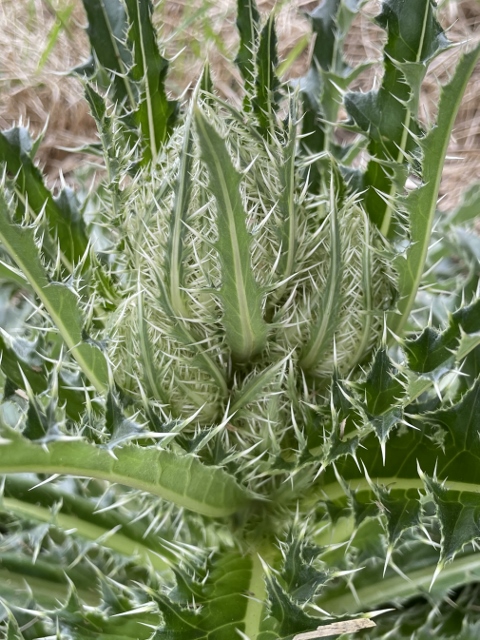
Bristle thistle has a number of common names: bull thistle, purple thistle, spiny thistle, yellow thistle and horrid thistle. It’s really only horrid if one touches its leaves, which are like serrated daggers.
In several states, it’s considered a valuable addition to a garden. The leaves, uncomfortable to human hands, are no challenge for caterpillars of little metalmark and painted lady butterflies; bristle thistle is a larval host to those species. The flowers are a rich nectar source for bees, butterflies and hummingbirds and beetles eat the flowers; the seeds are rich in oil and an important food source for seed-eating birds.
The plant produces a tall branching stem with multiple blooms of large yellow or red-purple flower heads. It can grow from one to five and a half feet tall; the rosette leaves can be as long as 24 inches. Yellow blooms are rare. Bristle thistle is often found along the edges of salt marshes; in the South, it also is considered a pasture weed.
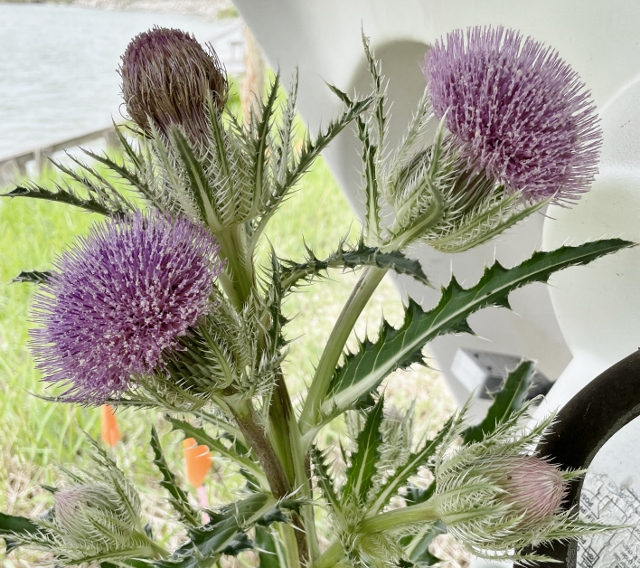
The blooms are short lived and quickly turn to seed and the flower stalk withers and droops. Bristle thistle is a North American species of plants in the thistle tribe within the sunflower family. It has a large taproot and fleshy side roots that sometimes sprout new shoots.
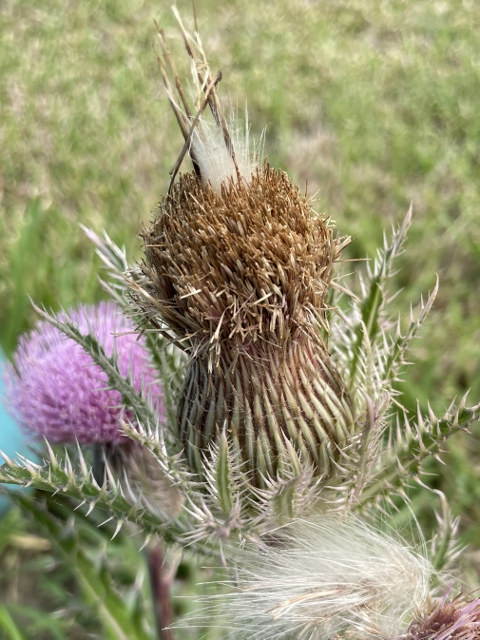
Bristle thistle can be an annual or biennial and is native to the eastern and southern United States from New England to Florida, Texas and Oklahoma as well as to Mexico, Belize, Guatemala, Honduras and the Bahamas.
It is interesting how a plant fits into the varied habitats of states in America and even in different countries around the world. For instance, bristle thistle is considered endangered in Connecticut, New Hampshire and Pennsylvania and threatened in Rhode Island, while Arkansas and Iowa list the Cirsium genus as a noxious weed. Bristle thistle is not invasive in Texas.

Leave a Reply